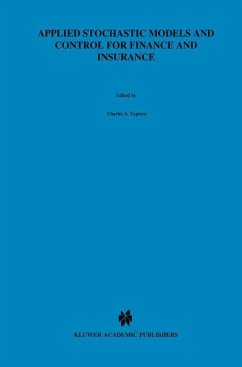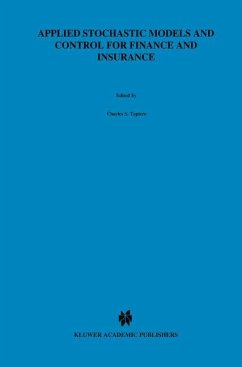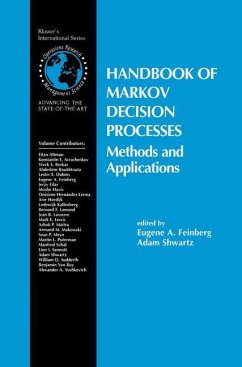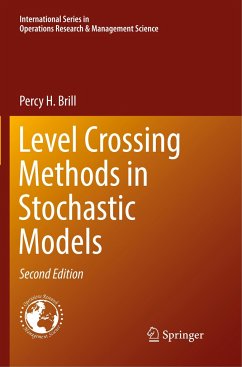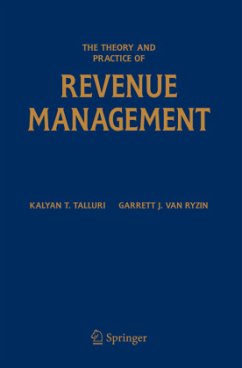
Foundations of Queueing Theory
Versandkostenfrei!
Versandfertig in 6-10 Tagen
76,99 €
inkl. MwSt.
Weitere Ausgaben:

PAYBACK Punkte
38 °P sammeln!
3. 2 The Busy Period 43 3. 3 The M 1M IS System with Last Come, First Served 50 3. 4 Comparison of FCFS and LCFS 51 3. 5 Time-Reversibility of Markov Processes 52 The Output Process 54 3. 6 3. 7 The Multi-Server System in a Series 55 Problems for Solution 3. 8 56 4 ERLANGIAN QUEUEING SYSTEMS 59 4. 1 Introduction 59 4. 2 The System M I E/c/1 60 4. 3 The System E/cl Mil 67 4. 4 The System MIDI1 72 4. 5 Problems for Solution 74 PRIORITY SYSTEMS 79 5 5. 1 Description of a System with Priorities 79 Two Priority Classes with Pre-emptive Resume Discipline 5. 2 82 5. 3 Two Priority Classes with Head-o...
3. 2 The Busy Period 43 3. 3 The M 1M IS System with Last Come, First Served 50 3. 4 Comparison of FCFS and LCFS 51 3. 5 Time-Reversibility of Markov Processes 52 The Output Process 54 3. 6 3. 7 The Multi-Server System in a Series 55 Problems for Solution 3. 8 56 4 ERLANGIAN QUEUEING SYSTEMS 59 4. 1 Introduction 59 4. 2 The System M I E/c/1 60 4. 3 The System E/cl Mil 67 4. 4 The System MIDI1 72 4. 5 Problems for Solution 74 PRIORITY SYSTEMS 79 5 5. 1 Description of a System with Priorities 79 Two Priority Classes with Pre-emptive Resume Discipline 5. 2 82 5. 3 Two Priority Classes with Head-of-Line Discipline 87 5. 4 Summary of Results 91 5. 5 Optimal Assignment of Priorities 91 5. 6 Problems for Solution 93 6 QUEUEING NETWORKS 97 6. 1 Introduction 97 6. 2 A Markovian Network of Queues 98 6. 3 Closed Networks 103 Open Networks: The Product Formula 104 6. 4 6. 5 Jackson Networks 111 6. 6 Examples of Closed Networks; Cyclic Queues 112 6. 7 Examples of Open Networks 114 6. 8 Problems for Solution 118 7 THE SYSTEM M/G/I; PRIORITY SYSTEMS 123 7. 1 Introduction 123 Contents ix 7. 2 The Waiting Time in MIGI1 124 7. 3 The Sojourn Time and the Queue Length 129 7. 4 The Service Interval 132 7.






